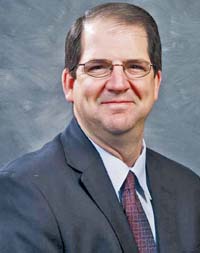Why final rule comes as last straw

CMS and ONC disappointed many CIOs and IT teams around the country on Aug. 29 when it issued a final rule for Stage 2 meaningful use that lacked the flexibility on reporting that so many had counted on – and perhaps expected, because what they had proposed seemed like a reasonable compromise to them.
CHIME, which represents 1,400 CIOs, fired off a statement the same day.
 “CHIME is deeply disappointed in the decision made by CMS and ONC to require 365-days of EHR reporting in 2015,” Russell Branzell wrote in his response to the rule. “This single provision has severely muted the positive impacts of this final rule. Further, it has all but ensured that industry struggles will continue well beyond 2014.”
“CHIME is deeply disappointed in the decision made by CMS and ONC to require 365-days of EHR reporting in 2015,” Russell Branzell wrote in his response to the rule. “This single provision has severely muted the positive impacts of this final rule. Further, it has all but ensured that industry struggles will continue well beyond 2014.”
[See also: MU Stage 2 offers 2014 flexibility.]
CHIME and other industry organizations had proposed reporting on Stage 2 requirements for any three-month quarter. In their view, it was a practical approach, one that made it more likely they would succeed and one that showed their continued support for the Meaningful Use Program.
Branzell further notes that nearly every stakeholder group echoed CHIME's recommendations to give providers the option of reporting any three-month quarter EHR reporting period in 2015. The recommendations he argued would "help hundreds of thousands of providers meet Stage 2 requirements in an effective and safe manner. Further, it would serve as positive incentive for those who must seek alternative paths to MU in 2014 to continue their work in 2015. Such a change would also have benefits for cross program alignment in areas of clinical quality measurement.
"This sensible recommendation, if taken, would have assuaged industry concerns over the pace and trajectory of rulemaking; it would have pushed providers to meet a higher bar, without pushing them off the cliff," he added in his statement; "and it would have ensured the long-term vitality of the program itself. Now, the very future of Meaningful Use is in question."
As of August 25, 143 eligible hospitals and 3,152 eligible providers had attested to Stage 2. So far, the program had paid nearly $25 million in incentives.
[See also: MU Stage 2 offers 2014 flexibility.]
 "The numbers are very low for particularly Stage 2 attestation. I mean, they’re like, what 4 percent of what should be, you know, currently going for Stage 2," Marc Probst, CIO of Intermountain Healthcare, and a member of the Health IT Policy Committee, remarked at a meeting of the federal advisory panel on September 3.
"The numbers are very low for particularly Stage 2 attestation. I mean, they’re like, what 4 percent of what should be, you know, currently going for Stage 2," Marc Probst, CIO of Intermountain Healthcare, and a member of the Health IT Policy Committee, remarked at a meeting of the federal advisory panel on September 3.
Probst was responding to CMS' Elizabeth Myers, who pointed out there was indeed flexibility in the final rule, but added there had been a lot of misunderstanding concerning reporting periods.
"I’m just wondering if we have a goal," Probst said. "I mean is it 10 percent by making these changes we should now get, 10 percent? 50 percent? I mean, there’s no way we’re going to get 50 percent, but, you know, I’m kind of going to why this set of rules, this very complex set of rules when there were some pretty obvious ones that we decided – ONC and CMS decided – not to pursue that could have had a much bigger impact."
It's a good question.
Part of the problem is that U.S. healthcare organizations everywhere have been barraged with a slew of government requirements, most of them complex and with a dizzying number of timelines. It's as if they are being told, "Do this; do that, and when you're done, make sure you dot the "i's and cross the "t's," and don't forget this other project, and the next one after that." If you don't get it all done right, there will be penalties to pay.
As if to prove our point, the day this issue was set to go to press, ONC issued yet another “final rule,” dropping its controversial 2015 edition certification criteria and instead opting for a more flexible version of the 2014 edition. The new rule is meant to “respond to stakeholder feedback,” wrote National Coordinator Karen DeSalvo, MD – but many CIOs might be forgiven for not being exactly thrilled about another 187-page document to digest.
The constant rulemaking – and revising – starts to get daunting and dizzying, even for the most detail-oriented.
Barring a change of rule, which does not seem likely – it is, after all, called a "final" rule – providers, hospitals and IT staffs are stuck with the mandate. And as trite as it may sound, the only choice is doing the best they can do, which calls for planning, maybe hiring more help and dotting one "i" and crossing one "t" at a time, or else absorbing penalties.
As for the government directives, couldn't the government at least align mandates so that deadlines do not compete with one another? Create rules that intelligent, savvy people, like Probst and his CIO colleagues can readily understand?
Sure, it's complicated. But, perhaps CMS and ONC could consider adding a large dose of simplification.
The Meaningful Use Program has garnered broad support as a way to truly transform our ailing healthcare system. It would be a shame to lose all that steam at Stage 2.























